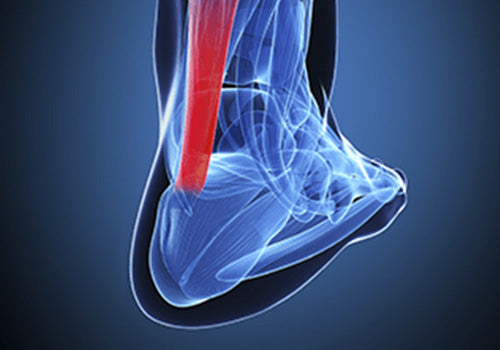Definition
Achilles tendonitis is inflammation of the Achilles tendon and can lead to degeneration. The achilles tendon is the large tendon located in the back of the leg that inserts into the heel. The pain caused by achilles tendonitis can develop gradually without a history of trauma. The pain can be a shooting pain, burning pain, or even an extremely piercing pain. Achilles tendonitis should not be left untreated due to the danger that the tendon can become weak and ruptured.
Cause
There are several factors that can cause Achilles Tendonitis. The most common cause is over-pronation. Over-pronation occurs in the walking and/or running process when the arch collapses upon weight-bearing, adding stress on the Achilles tendon. Other factors that lead to Achilles Tendonitis are improper shoe selection, inadequate stretching prior to engaging in athletics, a short Achilles tendon, direct trauma (injury) to the tendon, and heel bone deformity.
Treatment and Prevention
Athletes, particularly runners, should incorporate a thorough stretching program to properly warm-up the muscles. They should decrease the distance of their walk or run, apply ice after the activity and avoid any uphill climbs. Those with Achilles tendonitis should wear lightweight, shock-absorbing orthotics to help reduce stress and pressure on the Achilles tendon. The orthotic can help control over-pronation, support the longitudinal arch, and reduce stress on the Achilles tendon. If the problem persists, consult your foot doctor.



Share:
Arch Pain